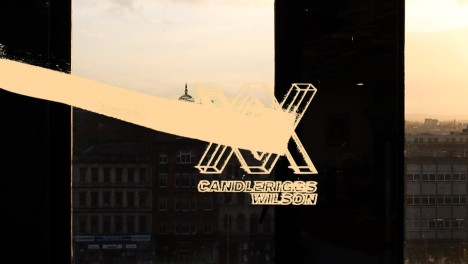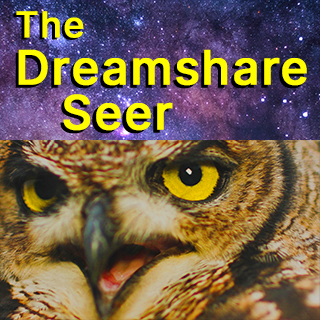Michael O’Pray Writing Prize
Queer Territories/Lesbian Lenses
Aislinn Evans critically examines a lesbian relation to histories of the land and landscape cinema

Charlotte Prodger, Stoneymollan Trail, 2015
‘The land one possesses is always a sign of barbarism and blood, while the land one traverses without taking it reminds us of a book.’ – Chantal Akerman, ‘Of the Middle East’, 1998
Coming out as a filmmaker means finding a place for myself. At a film programme I lit up while watching a short film about a modernist playground. The filmmaker was, predictably, a beardie, bespectacled old man. My friend leant over to me and said, ‘that’s so you’. As a dyke, I feel sheepish. My friends and associates programme film festivals in which queerness is immediately legible: sexy and satirical, the genre’s roots were planted by male auteurs of camp and its attendant discourses of representation. There’s no place for anything I make within these definable bounds of queer spaces; slow, diaristic work, post-industrial, cracked concrete. I might find a home in structuralist landscape cinema, but it is a territory marked by the objective, external, no-nonsense – all enclosed and the remit of men.
Between these fields, where do I stand? Where does it leave Chantal Akerman, Jenni Olson, Roni Horn, Charlotte Prodger, Ingrid Pollard? Let’s say that we are not ‘at home’ across these discourses, cinematic and national (queer, here, a territory). We could argue these film practices – marked by tensions of feminist subjectivity and space – form a ‘minor cinema’ that speaks in a major language: disobedient film practices that draw from techniques and discourses that contradict it. In combination they subvert the forms and techniques presided over by men.
A minor cinema, like a diaspora, doesn’t stake out a territory of its own but moves through foreign land. I am planting no flags. The mapping of space – cinematic, gendered, literal – is how the commons are enclosed, a process of colonialism. As residents of the borderlands, enclosure is not our friend. Olson and Prodger are anomalies in this milieu for naming queerness, Butchness, in their work, while Akerman, infamously, rejected queer categorisation. I will not enclose us to our neat corner of film history; instead, I am proposing a disobedient relationship to the landscape, one in which, as Giuliana Bruno notes, a ‘spatial attachment does not become a desire to possess’.
‘Dislocation’, Bruno tells us, ‘has always marked the terrain of the female traveller.’ She offers us an understanding of gender as geography, terrains which we negotiate. Voyage is socially defined as male through its dialectical dependency on a home – a motherland, a waiting wife – to which one will return. The female traveller is dislocated from her proper place. For our Butch travellers, this contradiction is heightened; there is no return to domestic, heterosexual life. The Butch occupies a disorienting ‘queer slant’ in space, and, as Sarah Ahmed suggests, this feeling of not-at-home holds potential for encountering space differently.
I suggest these artists are finding homes within dislocation. Whether rural or urban, there is a sense of belonging everywhere and nowhere. The cities are bigger than us, not queer Utopias for small-town boys but heterotopias where we fall through the cracks. Pollard rejects the notion that her Black lens on the English countryside is one of displacement; instead she is renegotiating an industrial ordering of space from city to agricultural country. We are drawn to contested space and to contest space, dislocating (disorienting) its standard apprehension, emphasising a particular interstices, a fringe. The vital experience of disorientation in a gendered geography throws the body from its ground – a Butch queering practice looks out, to the ground, as we find our feet.
Gender. Geography. Heterosexual terrain makes the Butch a fugitive. The language of masculinity is ‘unmarked’ on white men – neutral. Jack Halberstam tells us it is only ‘legible’ when residing elsewhere. Patriarchy is spatialised, creates space, the white man so well-oriented to his surroundings as to forget he’s oriented at all. The deliberate construction of space disappears, like the male cinematographer on his landscape. This invisible, natural occupation of space is how the flâneur, prototypical modernist man, strolls through the city. He moves to possess with his gaze, the landscape turned feminine, passive, making space for him – woman becomes a stop along the way.
This puts the Butch at a crossroads. The masculinities we possess orients us differently, and disorientates the onlooker; Butch sociologist Amy Tooth-Murphy says ‘people blink and look again’. In James Benning’s 11x14, the mundane roadscape of American identity is disoriented by the Butch/Femme couple set small and anonymous in the frame – beaten to a pulp in the background as a foregrounded male worker carries on. The filmmaker also looks on. The ‘liminal territory’ of the Butch flâneur (not flâneuse, her own thing) complicates and ultimately rejects this subject-object orientation of public space. Disoriented, dislodged, between gendered terrains – looking differently not just on but from this unbelonging.
Unlike Benning’s silence, these women make their documentation of external space internal, personal. They invert the voice-over in their work. The narrator isn’t presiding over an untouchable, contextualising position of the knower; rather, the voice-over becomes a way for her to occupy unoccupiable space. Her narration is flawed and personal. Over isolated encounters on New York’s transit network, Akerman reads cloying letters from her mother, drowned out at times by city noise. Ahmed tells us the home, for the lesbian, becomes a site of disorientation. The home in Akerman’s News From Home is twofold, both the life she left behind and her new life are foreign, transposed onto each other, as she attempts to re-orient.
Prodger disorients further, stretching the space between voice-over and screen. Like Akerman, her subjectivity crosses other voices: those of loved ones and readings from Audre Lorde and Samuel R Delaney that imbue the narration with a shifting ambiguity, dislocated from the rural images she speaks over. Prodger breaks down the meaning-making role of narration, its objective power, and in doing so reconstitutes cinematic space to be full of ambiguities and breathing room. A displaced subjectivity, we find life in the cracks.
Landscapes, like their inhabitants, have hierarchies. WJT Mitchell positions landscape art as a European, modern, imperial phenomenon. The genre harmonises ambivalent landscapes, subsuming resistance into a totalising narrative: an ‘emblem of national and imperial identity’. The violence that produced the landscape, naturalised. From the early phantom rides to the establishing panoramic shot, conventional cinema’s approach to the landscape has sought to orient the viewer from a point of mastery, of distance, unambiguous and controlled.
The Butch cinematographer takes a different angle: fragmented, close and focused on undervalued territories and perspectives. She challenges the production of a background, looking behind emblematic space for the objects and bodies relegated out of view. In Prodger’s Stoneymollan Trail, named after a coffin walk across Scotland, the emblematic views of rugged mountains are shot from dirty windows, obscured by the backs of tenements where Glasgow’s urban population resides. In Olson’s The Joy of Life, we dwell on car parks and dockyards, contemplating the suicidal lure of the Golden Gate Bridge. Horn, likewise, is fixated on the suicidality of the Thames, which she documents with thousands of indistinguishable photographs of water along with narratives of the lonely bodies washed ashore.
In the geography of gender, the Butch is denied citizenship. That is a metaphor, but I mean it. The Butch is disoriented, and the site of disorientation is powerful only for what we do with it. I do not want to fold us back into a legible queer category. There is a way to stake a claim on queer territory that fences you in, a queer nationalism that re-assimilates itself with whiteness. The white lesbian could turn reactionary, reorient herself on solid ground, reify gender, the market, the nation – achieve citizenship. But I have likened this lesbian lens to statelessness, displacement and diaspora. I refuse to know my place. There’s a reason Akerman and Pollard reject queer placement. Gloria Anzaldua challenges us, who is a lesbian writer? She answers, ‘a lesbian writer is white’; racialised lesbians always require further qualification. What do Prodger and Olson gain, territorially, from claiming (being claimed by) a queer category that Pollard loses?
I have suggested that a Butch lens makes a home within disorientation. Anzaldua, similarly, meditates on the queer subjectivity of the Mexican borderlands, making a home within ‘this thin edge / of barbwire’. In From the Other Side, Akerman looks at the south side of the US-Mexico border that US ideology relegates to the background. She uses the lens of subjectivity to navigate a thorny, liminal and racialised landscape. The lesbian lens, exiled from the gendered ordering of space – an order foundational to empire – has potential to weaponise disorientation. To disrupt national space and denaturalise borders.
Rather than crafting discourses and practices to bring us in line with a major queer cinema dominated by whiteness and men – or a landscape cinema defined likewise – this lesbian lens might reject cinematic territories altogether. It means sitting in an uncomfortable, disorienting position. It might mean treachery to whiteness. Rather than deterritorialised agents seeking our own territory, forming queer nations in the Californian desert, we can be a presence that possesses nothing, takes nothing. We can reconstitute space for the disoriented, those like us whose landscape does not extend her shape.
Aislinn Evans is an awardee of the Film and Video Umbrella and Art Monthly Michael O’Pray Prize 2023.
The Michael O’Pray Prize is a Film and Video Umbrella initiative in partnership with Art Monthly , supported by University of East London and Arts Council England.
2023 Selection Panel
- Terry Bailey, senior lecturer, programme leader, Creative and Professional Writing, University of East London
- Katie Byford, Projects Manager, Film and Video Umbrella
- Kondo Heller, poet, writer, and filmmaker
- Juliet Jacques, writer and filmmaker
- Chris McCormack, associate editor, Art Monthly








